10 Tips for Keeping Indoor Cats Healthy and Happy
http://decor-ideas.org 10/26/2015 02:13 Decor Ideas
October 29 is National Cat Day — not that your cat knows, or cares. But still, if you are a cat person, it’s only natural to want to give your feline friend the best. Why not make this occasion an opportunity to boost the cat-friendliness of your space? Keep indoor cats healthy, happy and entertained by adding a window perch, cat tree, water fountain or other special feature. Or simply take some time to play together. Your cat may not go overboard with the affection (like another furry species we could mention), but you can rest assured kitty loves you just the same.

1. Be there for your feline friend. Although cats have a reputation for being aloof and independent, that doesn’t mean they don’t appreciate your company and attention. House cats especially rely on you for their entertainment and companionship, so be sure to take some time to play with, brush or simply sit near your cat. When you need to go on a trip longer than a day or two, a trusted cat sitter who will come to your home is a far better option than a stay at a kennel (and often less expensive too). Try to find and stick with one sitter you and your cat are comfortable with — this makes things less stressful all around.
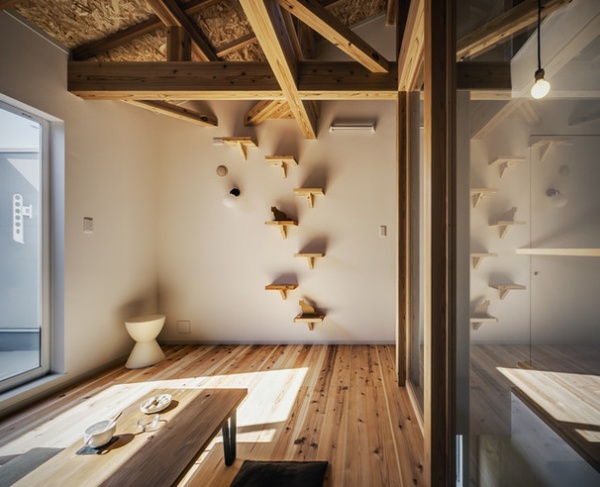

2. Create opportunities for exercise. Indoor cats need a chance to romp and use those springy muscles to stay fit and healthy. Consider adding a wall-mounted structure to your home where kitty can climb, jump and perch. There are many great DIY projects out there to try, like the series of perches and rustic-modern cat tree shown here.
World of Design: Pampered Pets and Their 10 One-of-a-Kind Homes
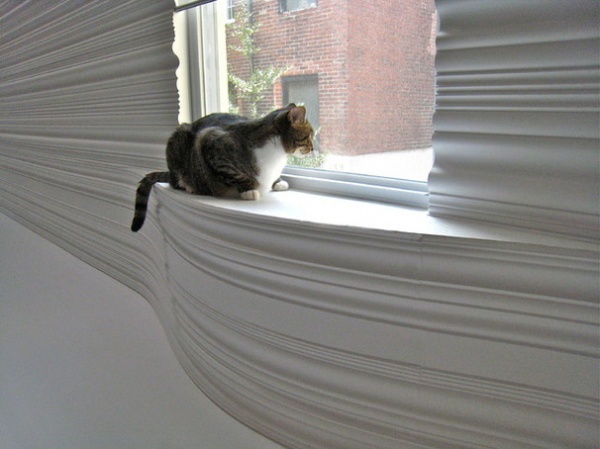
3. Give kitty a lookout. A window-side perch can provide hours of entertainment for indoor cats. If the windows with the best views are inaccessible to kitty, add a wall-mounted shelf or perch at window level (plus a way to jump up if needed). To provide maximum entertainment, consider hanging a bird feeder or placing a bird bath outdoors within view of your cat’s favorite lookout. And whenever possible, open a window (with a secure screen) so kitty can smell the air and feel the breeze.
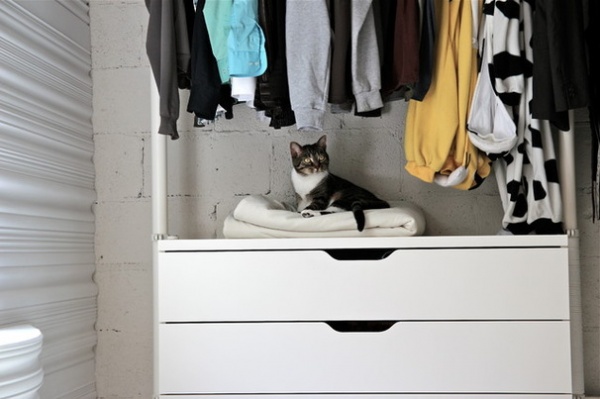
4. Give in to your cat’s unusual sleeping spot. Baskets, open drawers, cardboard boxes, closets, cupboards — is there anywhere a cat won’t sleep? Ah yes, that would be the pricey cat bed you bought. Instead of fighting it, roll with your cat’s preferences and make them accessible and comfortable. There’s no need to buy anything new, but a folded towel, blanket or — in the case of my old cat — a stack of paper bags to sleep on (cats are so weird) is a nice way to show you care.

5. Check your home for toxic plants — and add a few beneficial varieties. A surprising number of common plants are toxic to cats, including amaryllis, aloe, most lilies, asparagus fern, English ivy and philodendron. View complete lists of plants toxic and nontoxic to cats on the ASPCA website, and be sure to remove any offenders from your home. But cats do love plants, and having nontoxic and beneficial ones in the house is a wonderful mood and health booster for both of you. Plant a tray with kitty grass and set it where your cat can nibble it, and choose from the many houseplants that are safe for felines, like rubber plant, Boston fern and most palms — the more the better, as kitties do like to pretend they are wild jungle beasts.
22 Plants to Keep Away From Pets
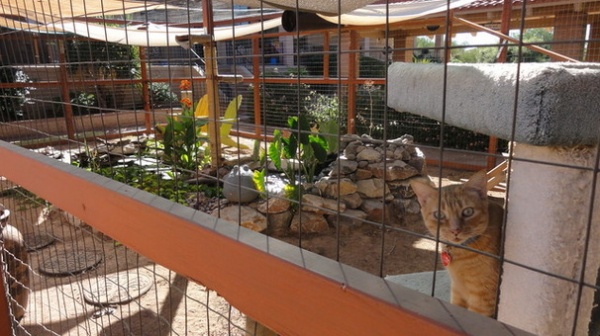
6. Consider a ‘catio.’ Even if you have outdoor space available, you may need to keep cats indoors to protect them from predators such as coyotes. Or you may choose to keep them in to protect the bird population. In either case, one great way to safely expand your furry friend’s territory is by constructing a protected outdoor patio, or “catio.” The one shown here was built by a couple with 16 rescue cats that needed more space than their home could provide. It includes ramps, steps, shade sails, cat-safe plants and a koi pond.
See more of this project
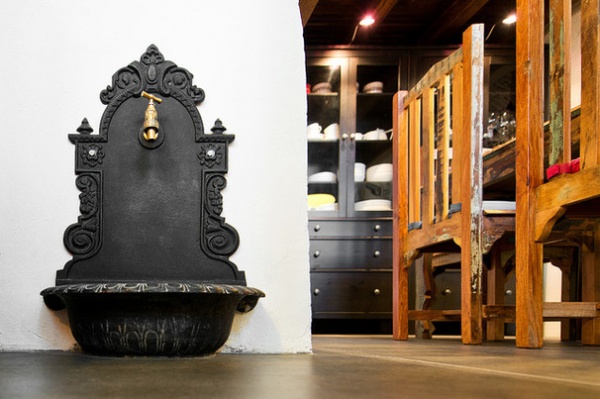
7. Get creative with water. Everyone knows that cats despise being bathed, dunked or otherwise soaked. But aside from that, they’re actually quite fond of water. Make life a little more interesting for your cat by providing a number of watering holes around the house. They could be as simple as a few bowls or glasses of water or as elaborate as a wall fountain positioned low, as shown here. Large stoneware bowls on stands filled with cat-safe water plants can also make a beautiful and cat-approved watering spot. Of course, cats seem to revel in drinking out of things other than their water dish, so don’t be surprised to find kitty dipping his nose into your water glass or a vase of flowers despite the bounty of options left for him.

8. Give kitty something to scratch (other than your furniture). Each cat has its favorite scratching material, so you may need to test out a few scratchers before finding the perfect one. Corrugated cardboard and natural-fiber rope or rug material seem to be popular with the feline set. Incorporating a scratching material with a climbing structure is a smart idea, especially if you can find one that fits with your decor, as seen here. If furniture scratching is a problem, try covering kitty’s favorite piece with a throw when you’re not home.

9. Keep litter in its place. Tired of litter (and worse) scattered all over the house? There will always be times when you have to clean up something you’d really rather not, but there are ways to make the whole litter box thing a neater and happier experience for all. Cats tend to prefer some privacy when they do their business, and we don’t like looking at it, so keeping the litter box in a cupboard is a win-win. Also, keeping the box contained within a closet or cupboard (preferably with a cat-sized entrance) means less litter will find its way around the house. To keep litter further under control, place a door mat (or rug designed for the purpose) in front of the box to snag the bits on kitty’s paws.

10. Keep a close eye on cats as they age. A decline in activity and appetite is normal to a certain degree as cats get older, but it can also be a sign of illness. The best way to ensure your cat lives a long, healthy life is to know its normal behavior and routines and to check with your vet when you think something might be up. Changes in chewing and grooming, drinking more or less water than normal, becoming reclusive and even bad breath can be signs of illness that need attention. No kitty likes going to the vet, but regular checkups (at any age) should be part of your indoor cat’s care.

Tell us: Are you a cat person? Share a photo of your feline friend in its favorite spot in the Comments.
More: Houzz TV: Watch These Rescued Cats Make a House Their Playland
Related Articles Recommended












